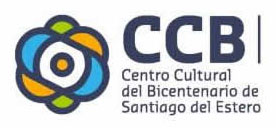SUNCHITUYOJ CULTURE – land of the suncho (South American bush of the family of the composites) (MIDDLE PERIOD)
Approximately from 800 A.D. and would last until the time of the Conquest.
From a cultural point of view, this period is a period of great development in the whole of Northwestern Argentina. The artistic expression achieved in this ceramic manifestation is remarkable, as it shows the constant interplay of form and design.
This culture shows many of the features found in the Amazonian region, so there were undoubtedly influences. The passage of traits is an indicator of transculturation. Even the anthropophysical study of the remains of these indigenous people indicates that they are of Amazonian or Brazilian type.
CERAMICS: very developed in its different ceramic types: ordinary, smoothed, polished, incised and painted. Fired in open kilns.
SHAPES: varied, large and small in pieces of various uses; some have served as funerary urns and others as containers to hold liquids, food, etc.
DESIGNS: the modelled motifs give this pottery a high aesthetic value, combining naturalistic and mythological manifestations.
Similar themes can be seen in the painted ones, but the central figure is represented by the owl, whether more or less naturalistic or stylised. The emphasis on this representation suggests that this bird played a very important role in the social, mythical and religious life of the indigenous peoples of the Santiago plains.
The snake is an intensely repeated design. Another theme is the anthropomorphic representation (i.e. it has a human shape or appearance), which is very well achieved.
Thus, the designs that characterise this period are zoomorphic (animal shape), ornithomorphic (bird shape), anthropomorphic (human shape) and their combinations in which geometric designs (fretwork, staggered, lines) are added.
SHAPES: all kitchen utensils, pipes, beads, figures in baked clay (small statuettes of felines, birds, among others), musical instruments such as whistles, ocarinas, flutes.
Torteros
(Muyuna, in the Quichua language means revolving)
Small pieces made of ceramic (some of stone) of circular, conical or biconical shape and perforated in the centre. They are plain, painted or engraved with geometric motifs. They were used in textile work by placing them on the spindle bases for spinning. By spinning, they maintained the balance necessary for twisting and winding the wool.
The Museum has more than 6,000 pieces in its collection. Their abundance indicates the degree of development of textile activity, the practice of which continues to be handed down from generation to generation.


